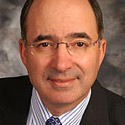02:05 PM
Lehman, Merrill, and Bear — Oh My
While Dorothy of the Wizard of Oz was worried about lions, tigers and bears in the Haunted Forest, we are now worried about the fate of the investment banking industry as three of the top five independent investments banks either collapsed or were forced to be taken over during the past six months. As I finish this note, we have seen the collapse and acquisition of Bear Stearns by JP Morgan Chase, the imminent bankruptcy of Lehman Brothers, and a managed takeover of Merrill Lynch by Bank of America.
Besides becoming morose over the loss of these iconic brands, the pain of friends and former colleagues, and elimination of billions of dollars in wealth, the real question is what will be of the investment banking industry?
Without doubt, the investment banking industry will never be the same. The days of the all-in-one global investment bank may be nearing an end. We are seeing a downsizing of industry capacity and we will absolutely see a movement away from risk and toward transparency and liquidity.
A Flight to Safety
So what does a flight to safety mean? The flight to safety will be a classic asset reallocation from risk-based toward cash, sovereign debt, hard commodities (metals), and blue chips (without financials exposure). This will be quick, but hopefully the Fed will provide liquidity for institutions to defuse some of the melee.
While the discussion about safety is quick, the discussion about transparency is a bit more complex. Besides moving into safe assets, anyone buying risk-based assets will want to ensure that there is a continuous and liquid market for these products. The ramifications for this are broad and far-reaching. This transition will shift underwriters to making their debt and swap products as generic as possible, as well as pressure the industry to move as many products from Over-the Counter markets to exchange-traded.
While moving from OTC to on-exchange may provide more transparency, it also enables the dealers to move these products from being traded out of the principal account to being pure agency transactions. In addition, we will see the banks that currently do both commercial and investment banking reduce the amount of risk capital they employ on the investment banking side of the business.
The End of Securitization
For twenty years securitization has been critical component of the financial markets: the accumulation of heterogeneous debt, repackaged into more homogenous debt and sold as securities has enabled banks to increase the velocity of their lending, has made debt less expensive, and has been the muse of financial innovation. We will see this trend reverse as fewer and fewer investors will want to hold securitized debt, and fewer banks and dealers will want these products or their precursors on their balance sheet.
This will have significant ramifications on debt issuers. Debt issuers such as mortgage, auto loan, and credit card issuers (the banks writing the credit " not necessarily MasterCard and Visa) will have a much more difficult time securitizing their debt and selling it. This will slow the velocity of money and reduce the amount of credit extended. Banks that make loans will need to hold these loans for much longer than they originally expected and force banks to do a better job of managing credit exposure, than they did in the days were they could securitize and sell most anything.
Good Bank / Bad Bank
In a movement away from risk, we will see a greater transition by banks to insulate or isolate risk. With the possible exception of Goldman Sachs and Morgan Stanley (and maybe not them either, depending upon the ending of this contagion) we will see the large banks try to clove off both their risky assets as well as their risk-taking operations into another subsidiary " most likely a hedge fund, similar to the Good Bank / Bad Bank concept that Lehman floated. The idea behind this is to spin off risky assets into a separately capitalized subsidiary leaving the good assets in the Mother Bank, this way the Good Bank will not be tainted by the assets of the Bad Bank.
While Goldman and Morgan Stanley may resist this movement, I am not sure the market, the Fed, or individual bank depositors will allow the continuation of the status quo, as once the industry is "righted" they will not want to see the chance of starting another contagion or panic. So what does the Good Bank look like? The Good Banks will look more like the banks of 20 and 30 years ago, where there were fewer risky assets in the Good Bank, leaving the Bad Bank with all the risk.
Larry Tabb is the founder and CEO of TABB Group, the financial markets' research and strategic advisory firm focused exclusively on capital markets. Founded in 2003 and based on the interview-based research methodology of "first-person knowledge" he developed, TABB Group ... View Full Bio























